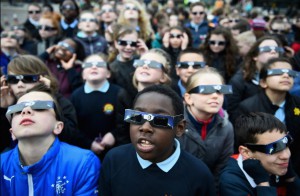On Monday, August 21, 2017, portions of North America will experience a total eclipse of the sun. Total eclipses occur when the moon passes over the sun and covers it from view on Earth. The last such event was in 1918, and the next one won’t happen again until April 8, 2024. So it is something to see, albeit safely. Remember, looking directly into the sun may permanently damage your vision.
The American Optometric Association, NASA, and the American Astronomical Society have put together detailed guidelines on how to safely see the solar eclipse. The main points they each discuss are:
DON’T look directly at the sun without eye protection, even briefly. When is the right time to take off the viewers? “If you’re wearing your eclipse glasses and it becomes so dark you can’t see anything, you know it’s safe, and it’s time to take them off,” says Alex Young, a solar scientist at NASA’s Goddard Space Flight Center in Greenbelt, MD. Note that in New Jersey, the eclipse will be around 75 percent, so the filtered glasses must be worn throughout the eclipse.
DO get special approved solar eclipse viewers. The only safe way to view a partially eclipsed sun is through special-purpose solar filters such as “eclipse glasses” or viewers that meet international standard ISO 12312-2 for safe viewing. All About Eyes will be selling a limited number of eclipse glasses available for $2.
DON’T use sunglasses, smoked glass, unfiltered telescopes or magnifiers, or polarizing filters. They are unsafe for viewing an eclipse.
DO put the special glasses on before looking at the sun to view the eclipse, and when removing them, turn away from the sun before doing so.
DON’T use any filter if it is scratched or damaged.
If you should experience discomfort or vision problems following the eclipse, visit All About Eyes for a comprehensive eye examination.



